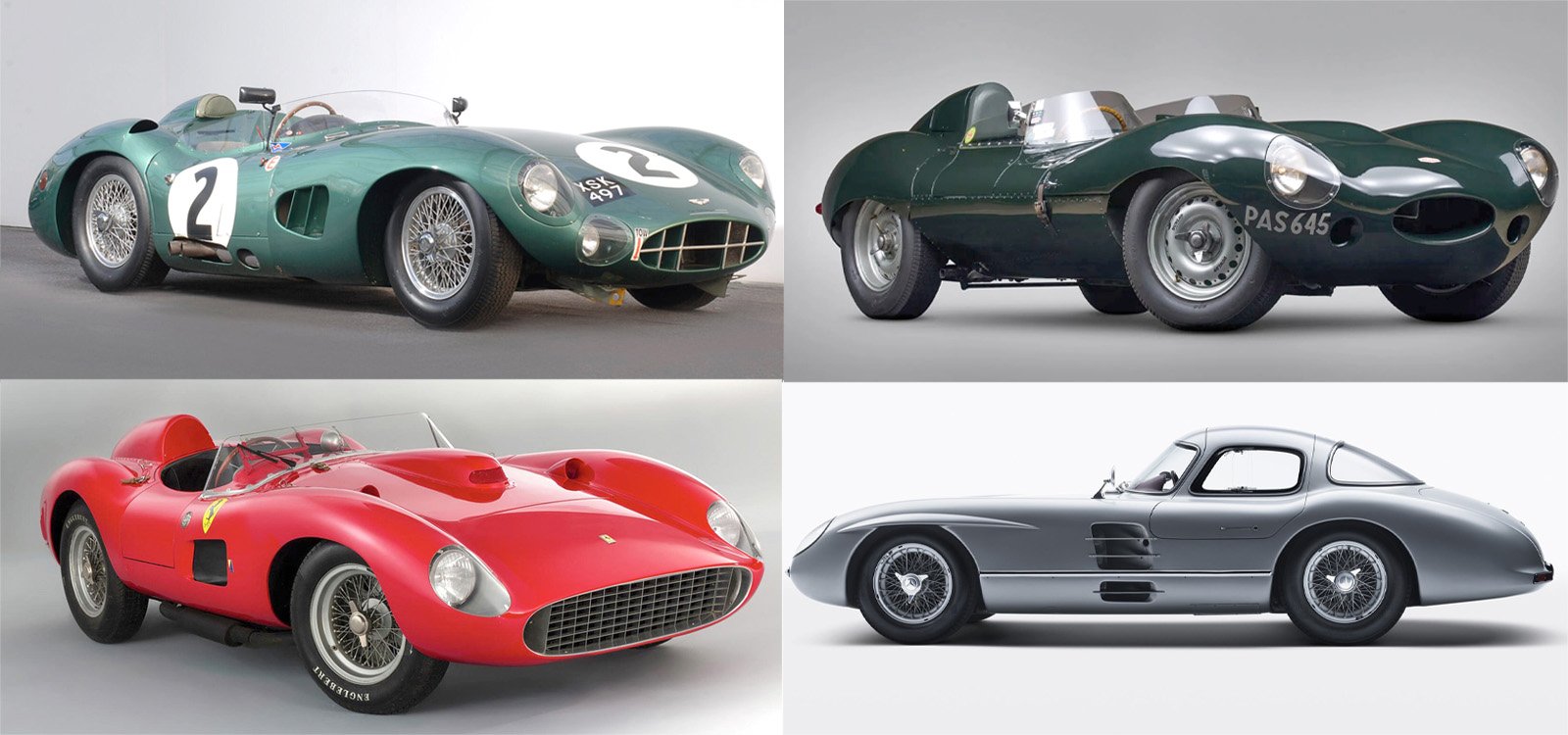This Month, We’ve Kept A Close Eye On The Most Captivating And Intriguing Wheels By The World’s Most Impressive Classic Lines. Are You In For This Treat To Revisit Its Glory? Hop Right In!
All the automotive aficionados out there know that there are cars, and then there are “CARS.” There is the utilitarian, reliable, practical and in most times, but are relatively boring, too. And the others are the rare automobiles that provide more than just transportation. They’re the ones that border on rolling art. The cars that most consider to be the miracles of engineering. The ones that glorify speed and luxury. The ones that are best described as madness sitting on four rubber tires are the actual CARS.
After all, every era of automotive history has its legends, and of those few, many became lost to history. A rare handful (or fewer) are still around, flaunting recordbreaking speed and handling from a time long since past. The most famous automotive brands have been attracting broader audiences year after year and have also been the object of fiercely competitive auctions. And at the very high end of the spectrum, classic cars have always out stood in their own eras.
Thus, we have come across the industry’s classic creations that have ever made their name for their supercars, racing roadsters, and world championship winners. So, you too can relish in envy at these marvels of automotive engineering and design.
1. MERCEDES-BENZ COUPE 300 SLR

The 1955 CMC Mercedes-Benz 300 SLR Coupé is an iconic masterpiece that epitomizes the golden era of automotive excellence. Crafted with precision and sophistication, this timeless beauty showcases the harmonious fusion of cutting-edge engineering and elegant design. With its distinctive gull-wing doors and sleek aerodynamic body, the 300 SLR Coupé captured the imagination of car enthusiasts around the world.
Underneath its stunning exterior lies a powerful heart, as the 300 SLR Coupé was equipped with a high-performance engine that delivered unparalleled speed and performance. It boasted a 3.0-litre inline-eight engine, capable of producing an impressive 310 horsepower. This remarkable powertrain, combined with its lightweight construction, enabling the 300 SLR Coupé to reach breathtaking speeds on both road and track.
Not only was the 1955 CMC MercedesBenz 300 SLR Coupé a marvel of engineering, but it also left an indelible mark on the history of motorsport. Moreover, the 300 SLR Coupé’s unrivalled performance and groundbreaking innovations solidified its place as an automotive icon, forever etched in the annals of automotive history.
2. FERRARI 335 S

The Ferrari 335 S was a race car produced by the Italian automaker in the 1950s. It was first introduced as a successor to the successful Ferrari 315 S, with the aim of competing in endurance races. With featuring a powerful 4.1-litre V12 engine along with around 400 horsepower, it provides an exceptional performance, a top speed of over 185 mph, and making it one of the fastest cars of its time. Therefore, the stylish and aerodynamic body design contributed to its high-speed capabilities. Late back, the 335 S was renowned for its racing success, winning several important races during its time. Thus, it remains a legendary and iconic car in the history of Ferrari.
Standing as a resplendent testament to the automotive excellence birthed by the illustrious Italian marque. This opulent masterpiece was conceived with an ardent desire to triumph in endurance races of unparalleled significance, emerging as a worthy successor to its eminent predecessor, the Ferrari 315 S. Nestled within its stately frame laying a prodigious 4.1-litre V12 engine, a pulsating heart that summoned over four hundred graceful steeds to the fore. With a top speed eclipsing 185 mph, the 335 S soared amongst the elite, asserting its position as a veritable titan of the road.
Thus, the chronicles of automotive lore resonate with the triumphs of the Ferrari 335 S, for it emblazoned indomitable name upon the annals of racing history. Etching an indelible mark upon the racing tapestry, it emerged as a shining testament to the undeniable prowess of this illustrious prancing steed. Amid the realm of collectors and enthusiasts, the Ferrari 335 S stood out as a revered and coveted relic of a bygone era. Its limited presence commands adulation, beckoning connoisseurs and enthusiasts alike to bask in its timeless glory.
3. ASTON MARTIN DBR1 ROADSTER

The ethereal embodiment of elegance and performance, the 1956 Aston Martin DBR1 Roadster beckons to the erudite connoisseur, whose discerning eye appreciates the resplendent culmination of artistry and engineering that graces this exquisite specimen. Exalted as the paragon of refined automotive aesthetics, the DBR1 embraced a sylvan silhouette befitting the noble lineage seamlessly blending form and function in a masterful design. Beneath the bonnet, an adroitly crafted marvel of mechanical prowess awaits. A prodigious 3.0-litre straight-six engine, augmented to unleash a symphony of power, conveying the DBR1’s essence with unwavering poise.
It’s powered by a 3.0-litre straight-six that sends around 300 hp to a five-speed transaxle. The DBR1’s chassis is a tubular space frame, with lightweight aluminium bodywork laid over the top. Thus, the DBR1 was reportedly an easy-handling car, and it could comfortably top 175 mph down. Such qualities helped the DBR1 take first and second at the 24-hour classic in 1959—Aston’s only overall victory at the track. This particular DBR1 was raced at various points and comes fitted with a spare engine.
Given its incredible history, you could convincingly argue that the DBR1 is the most noteworthy car Aston Martin has ever built. Sure, the James Bondapproved DB5 might have made the line a household name, but the DBR1 gave Aston real motorsport credentials.
4. DUESENBERG MODEL SSJ CONVERTIBLE

Gary Cooper’s 1935 Duesenberg “SSJ,” chassis number 2594 with engine J-563, has been one of the most extraordinary cars of the Classic era, with a 400-horsepower supercharged straight-eight engine placed in an abbreviated Duesenberg chassis with roadster bodywork. Offered for the first time in nearly 70 years, J-563 is arguably the rarest and most significant road car. European sports cars of the 1950s and ‘60s have been dominating the market, certainly, but this car is as rare as any sports or sports-racing car and is in fact powerful and capable enough to enjoy on tours and rallies.
Thus, the SSJ was a variation of the Duesenberg Model J, designed for speed, with a supercharged eight-cylinder engine that produced 400 horsepower, making it one of the fastest cars of the 1930s. It boasted a top speed of 140 mph, which was unparalleled at the time.
Wherein, the car’s exterior was designed with sleek, aerodynamic lines and a bold, imposing grille that gave it a majestic presence on the road. Whereas, the car’s interior is also a marvel of luxury, with handcrafted leather seats and a beautifully designed dashboard that includes a tachometer, speedometer, oil pressure gauge, and other vital instruments. As a result, it remains one of the most soughtafter classic cars in the world and is highly prized by collectors and enthusiasts alike. Its rarity, power, and exquisite design make it an enduring symbol of the golden age of American motoring.
5. JAGUAR D-TYPE 530

One glance at the 1955 Jaguar D-Type sends chills down the spine of any gearhead. Seductive curves following elegant body lines caress the very soul of a vintage race car. Of course, this is not just another D-Type, if there is such a thing, this is “The Ice Racer”. As a regular entry in vintage racing and rally events spanning two decades, this D-Type defines pedigree. Under the bonnet is the original factory-upgraded 3.8L twin-cam inline 6-cylinder engine. This baby purrs just as a Jaguar should!
Cornering in a D-Type is just as liberating as hitting the straights. This car’s lightweight design keeps it nimble on its feet, while a manual gearbox puts you in control. With rounded sides both for strength and crosswind stability, the suspension was conventional but used disc brakes and a power-assisted master cylinder that were adapted from aeroplanes and never seen before on a racing car. When the D-type was introduced in 1954, it was years ahead of anything anybody else could think about building.
Because it worked very well, too, particularly in endurance racing. For years after the factory quit racing in 1956, it remained the best distanceracing car you could buy. Although, the monocoque canter chassis was a mystery to anyone who hadn’t built warplanes, as it was designed and built far more like an aeroplane than a traditional car.
6. MCLAREN F1

A 1995 McLaren F1 road car, described by the company as a “time capsule,” called Chassis 029, the vehicle has rarely been seen by the public. According to McLaren, this particular model was the 25th of 64 road cars from the production run built and the only one finished in the one-off metallic colour dubbed “Creighton Brown” that is complemented by a light tan and dark brown leather upholstery interior
Designed by Gordon Murray, the F1 boasts a mid-mounted, naturally aspirated 6.1-litre V12 engine delivering 618 horsepower and 479 pound-feet of torque. With power sent to the rear wheels through a six-speed manual gearbox, these iconic V-12-engined F1 road cars were produced between 1992 and 1998, with just 64 being completed to the original road car specification.
To this day it remains the fastest naturally aspirated production car with a top speed of 240 mph (386 km/h)— helping to cement its status as one of the most desirable of all collector cars which also represents the highwater mark for a vehicle. The F1 is considered by many to be the first hypercar and, with just 106 built between 1992 and 1998, which makes it among the most prized vehicles in the world.
7. ALFA ROMEO 8C 2900B LUNGO SPIDER

The Alfa Romeo 8C 2900, whose lineage is part of a consistent and logical evolution stretching back to the 1920s, to the competition-oriented P3s, and the overwhelming race victories achieved in the early to mid-1930s by the 8C 2300s. The 8C 2900 was not a mere sports car, but the most advanced, modern, and compelling sports car that money could ever buy.
Each wheel carried independent suspension; its Vittorio Jano-designed straight-eight engine was two alloy banks of four cylinders, with not only dual overhead camshafts but two Roots-type superchargers, as well. As exciting and dramatic as the 2.9 chassis itself was, they benefitted from the addition of some of the most sensuous and well-balanced coachwork of the pre-war era.
This Lungo Spider by Touring of Milan is one of the classic Italian coachbuilders of the period – was said to be one of the most advanced, modern and compelling cars of its generation with being capable to speeds of 110mph. That may not sound like much beyond the reach of a small family hatchback these days but it was one of the fastest road cars of its time





















